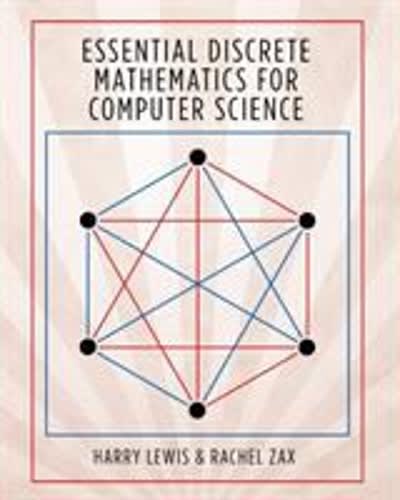


,.kindly solve
Answer ALL the parts. Post a CLEAR ANIIlI STEP BY STEP EXPLANATION. Do not post incomplete solutions Consider a two-period small open endowment economy populated by a large number of households with preferences described by the lifetime utility function In lCl+l[l|:|'fll]llnl:2, where C1 and C2 denote, respectively, consumption in periods 1 and 2. Suppose that households receive exogenous endowments of goods given by {11 2 G2 = 10 in periods 1 and 2 respectively. Every household enters period 1 with some debt, denoted ElCI, inherited from the past. Let BO be equal to -5. The interest rate on these liabilities, denoted rD, is 2D percent. Finally, suppose that the country enjoys free capital mobility and that the world interest rate on assets held between periods 1 and 2, denoted r*, is 1G percent. lEompute the equilibrium levels of consumption, the trade balance, and the current account in periods 1 and 2 \fConsider a twoperiod model of a small open economy with a single good each period and no investment. Let preferences of the representative household be described by the utility function U{C1, C2} = p C1 + [5 p C2 The parameter [3 is known as the subjective discount factor. It measures the consumer's degree of impatience in the sense that the smaller is B, the higher is the weight the consumer assigns to preserrt consumption relative to future consumption. Assume that B = U11. The representative household has initial net foreign wealth of {1 + rlt I] = 1, with r = [1.1, and is endowed with Ell = 5 units of goods in period 1 and 02 = ID units in period 2. The world interest rate paid on assets held from period lto period 2, r * , equals 16% {i.e., r * = [1.1] and there is free international capital mobility. 1. Calculate the equilibrium levels of consumption in period 1, C1, consumption in period 2, C2, the trade balance in period 1, T El, and the current accourrt balance in period 1, CA1. 2. Suppose now that the government imposes capital corrtrols that require that the country's net foreign asset position atthe end of period 1 be nonnegative {3* 1 a D}. Compute the equilibrium value of the domestic interest rate, r1, consumption in periods 1 and 2, and the trade and currerrt account balances in period 1. 3. Evaluate the effect of capital corrtrols on welfare. Specically, nd the level of utility under capital controls and compare it to the level of utility obtained under free capital mobility. 4. Forthis question and the next, suppose that the country experiences a temporary increase in the endowment of period 1 to El = '3, with period 2 endowment unchanged. Calculate the effect of this output shod: on C1, C2, T Bl, CA1, and r1 in the case that capital is freely mobile across courrtries. Consider a twoperiod model of a small open economy with a single good each period. Let preferences of the representative household be described by the utility function lnl[C1} + ln[C2}, where C1 and C2 denote consumption in periods 1 and 2, respectively, and In denotes the natural logarithm. |n period 1, the household receives an endowment of [31 = 1D. In period 2, the household receives prots, denoted by [Pie sign]I2, from the firms it owns. Households and firms have access to financial markets where they can borrow or lend at the interest rate r1. {r1 is the interest rate on assets held between periods 1 and 2.} Firms invest in period 1 to be able to produce goods in period 2. The production technology in period 2 is given by G2 = squareroot of IL where 02 and Il denote, respectively, output in period 2 and investment in period 1. Assume that there exists free international capital mobility and that the world interest rate, r" = 10% per period .e., r* = [1.1]. Finally, assume that the economy's initial net foreign asset position is zero [B_D"'* = {l}. Compute the nn's optimal levels of period1 investment and period2 profits. State the maximization problem of the representative household and solve for the optimal levels of consumption in periods 1 and 2 Find the country-\"s net foreign asset position at the end of period 1, the trade balance in periods 1 and 2, and the current account in periods 1 and 2. Now consider an investment surge. Specically, assume that as a result of a technological improvement, the production technology becomes D2 = 21l[|_1 ]. Find the equilibrium levels of saving, investment, the trade balance, the current account, and the courrtrfs net foreign asset position in period 1. Compare your results with those obtained in items [al [cl providing interpretation and intuition













